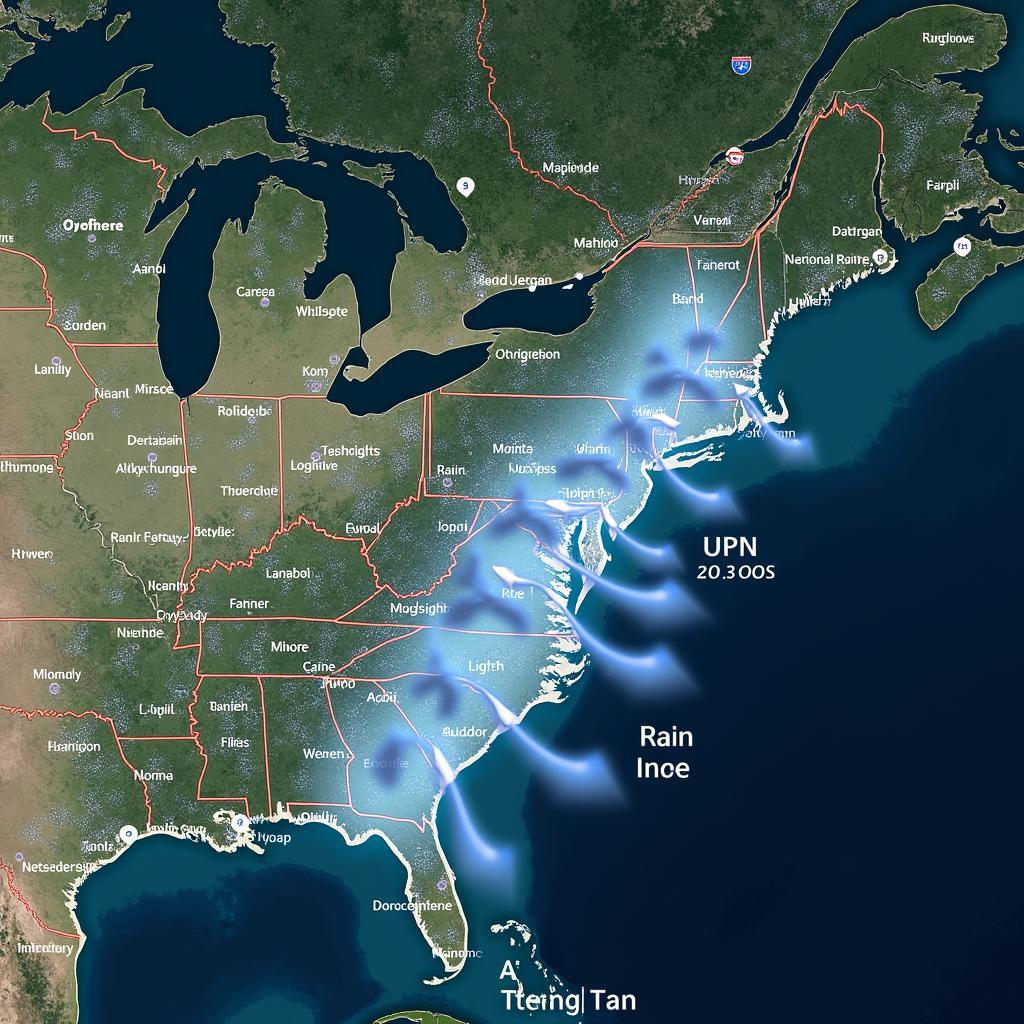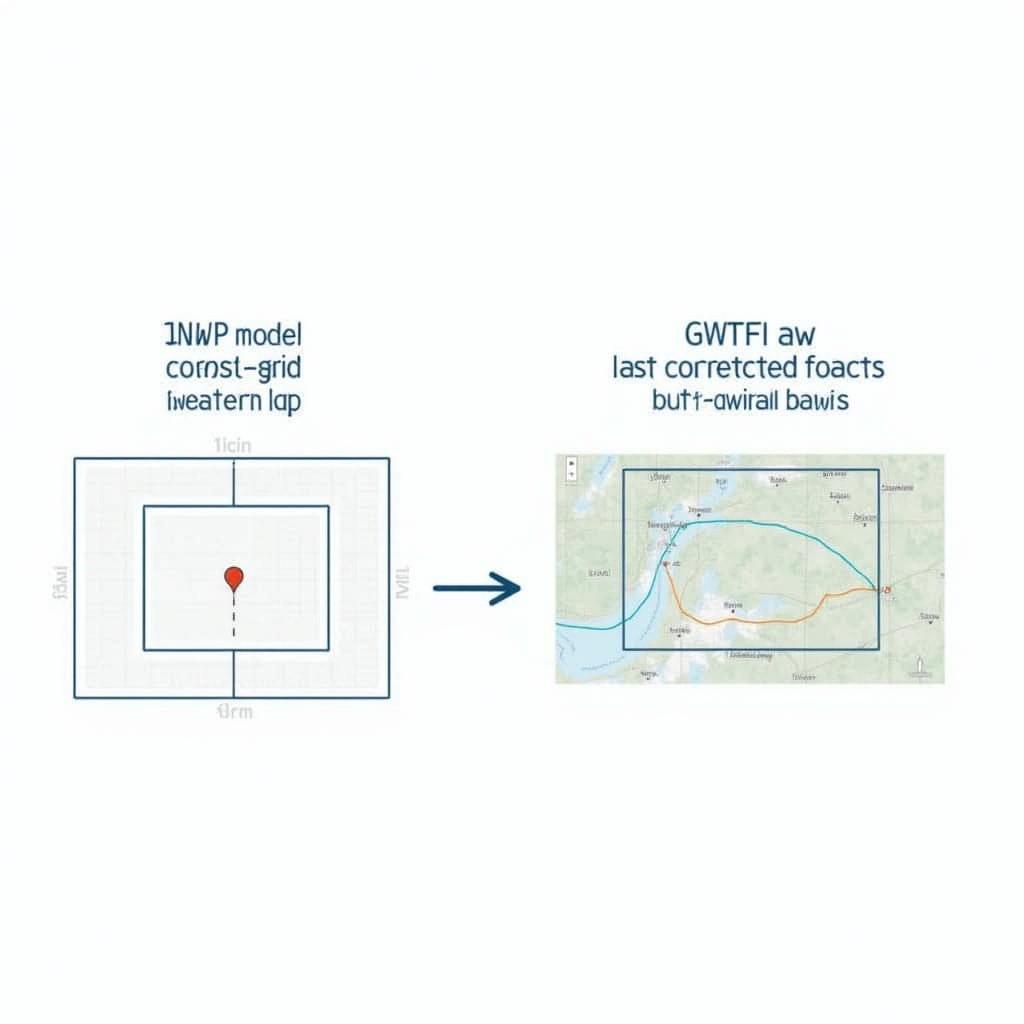Mở bài
Chủ đề AI In Weather Forecasting đang bùng nổ và có tác động rõ rệt đến cách con người dự báo thời tiết, từ mưa rào trong ngày đến bão nhiệt đới cấp độ lớn. Trong IELTS Reading test, các chủ đề khoa học ứng dụng, khí tượng, dữ liệu lớn và trí tuệ nhân tạo xuất hiện khá thường xuyên, đặc biệt trong Passage 2 và Passage 3. Bài viết này cung cấp cho bạn một đề thi IELTS Reading practice trọn bộ theo format Cambridge: 3 passages tăng dần độ khó, bao trùm nhiều dạng câu hỏi như Matching Headings, T/F/NG, Y/N/NG, Multiple Choice, Summary Completion…, kèm đáp án, giải thích, từ vựng và chiến lược làm bài. Bài phù hợp cho học viên từ band 5.0 trở lên, muốn luyện tập đề thi IELTS Reading chất lượng, tối ưu thời gian, hiểu sâu kỹ thuật skimming–scanning, và nâng cao vốn từ học thuật về AI in weather forecasting.
1. Hướng dẫn làm bài IELTS Reading
Tổng Quan Về IELTS Reading Test
- Thời gian: 60 phút cho 3 passages
- Tổng số câu hỏi: 40 câu
- Phân bổ thời gian khuyến nghị:
- Passage 1: 15-17 phút
- Passage 2: 18-20 phút
- Passage 3: 23-25 phút
Chiến Lược Làm Bài Hiệu Quả
- Đọc câu hỏi trước, sau đó đọc passage (skimming để lấy ý chính, scanning để tìm chi tiết)
- Chú ý từ khóa, đặc biệt là paraphrase (synonyms, cấu trúc đổi khác)
- Quản lý thời gian chặt chẽ, đánh dấu câu khó, quay lại sau
- Không bỏ trống câu nào; đoán có chiến lược khi cần
Các Dạng Câu Hỏi Trong Đề Này
- Multiple Choice
- True/False/Not Given
- Sentence Completion
- Yes/No/Not Given
- Matching Headings
- Summary/Note Completion
- Matching Features
- Short-answer Questions
2. IELTS Reading Practice Test
PASSAGE 1 – From Wind Vanes to Algorithms: Everyday Weather Made Smarter
Độ khó: Easy (Band 5.0-6.5)
Thời gian đề xuất: 15-17 phút
In the past, people used simple tools like wind vanes and barometers to guess the weather. Today, we rely on satellites, radar, and, increasingly, artificial intelligence (AI). AI can scan huge amounts of data and find patterns that humans might miss. It helps meteorologists make faster and sometimes more accurate predictions. While AI is not magic, it has become a practical assistant that brings everyday weather forecasts closer to what we actually experience on the ground.
 Hệ thống AI phân tích dữ liệu thời tiết phức tạp từ vệ tinh để đưa ra dự báo chính xác hơn.
Hệ thống AI phân tích dữ liệu thời tiết phức tạp từ vệ tinh để đưa ra dự báo chính xác hơn.
Weather data arrives from many places. There are satellite imagery, ground sensors, ships at sea, and even airplanes. In recent years, people have also shared data from their phones and home stations, a process called crowdsourcing. AI algorithms can blend these sources, clean the data, and flag unusual readings. Because some instruments fail or send wrong values, AI can reduce noise in the dataset. As a result, forecasts can become more stable and less sensitive to individual errors.
One popular use of AI is nowcasting, which focuses on the next few hours. For example, radar images show where rain is currently falling. A simple method is to push those rain clouds forward at the same speed. But rain does not move like a single block. It grows and fades, splits and combines. AI models, especially neural networks, can learn these behaviors from past radar sequences. They can guess how clouds will change in the short term, sometimes beating traditional methods. Not only can AI track movement, but also it can predict how intensity might increase or weaken within a city.
 Mô hình AI nowcasting dự đoán sự thay đổi cường độ và hướng di chuyển của mưa trong thành phố.
Mô hình AI nowcasting dự đoán sự thay đổi cường độ và hướng di chuyển của mưa trong thành phố.
Another area is temperature and wind. Local conditions, such as a river or a hill, can change how air moves. Traditional models work well on large scales. However, they may miss details on a small street or a single valley. AI can learn those local microclimates if it has enough examples. For instance, an AI system might notice that a certain neighborhood is often warmer at night because there is more concrete. This is the urban heat island effect. By including land cover, building height, and traffic data, AI can fill the gap between national maps and neighborhood forecasts.
Of course, AI needs careful training. If the data used to teach the model is limited, the AI might be biased. It could work well in summer but fail in winter storms. That is why meteorologists test AI on new situations and measure its accuracy with standard verification scores. They also compare AI with ensemble forecasts, which are many different simulations that try to capture uncertainty. When AI agrees with most of the ensemble, confidence is higher. When it disagrees, forecasters ask why. It is because blind trust in any single tool can lead to poor advice for the public.
AI also helps with communication. Weather apps often show a single number, like a 60% chance of rain. But people want to know: should I carry an umbrella? AI can personalize advice by combining probabilistic forecasts with user preferences. For a cyclist, a short shower might matter more than for a driver. By turning raw numbers into useful tips, AI supports better daily decisions. In this way, technology becomes not just a calculator, but a guide.
Finally, it is important to remember that AI supports, but does not replace, human experts. Meteorologists understand rare events and local history. They can explain when models might fail and when to issue warnings. The best results come from human–AI collaboration, where each side does what it does best. If we use AI carefully, we can expect weather information that is clearer, faster, and more helpful for our daily lives.
 Chuyên gia khí tượng học cộng tác với AI phân tích bản đồ thời tiết để đưa ra cảnh báo chính xác.
Chuyên gia khí tượng học cộng tác với AI phân tích bản đồ thời tiết để đưa ra cảnh báo chính xác.
Questions 1-13
Instructions: Answer the questions below. Questions follow the order of the passage.
Multiple Choice
Choose the correct letter, A, B, C or D.
-
What is the main benefit of AI mentioned in the first paragraph?
A. It replaces all traditional tools
B. It finds patterns in large datasets quickly
C. It removes the need for satellites
D. It predicts climate decades ahead -
Crowdsourced weather data primarily helps AI to
A. increase noise in data
B. remove the need for radar
C. expand and clean the dataset
D. make long-term climate models -
In nowcasting, AI improves on simple methods because it can
A. stop rain from splitting
B. control cloud speed precisely
C. learn how rain intensity changes
D. avoid using radar images -
AI can improve neighborhood forecasts by using information about
A. building height and land cover
B. only national maps
C. ocean currents
D. airplane altitudes -
Comparing AI with ensemble forecasts helps meteorologists
A. avoid using verification scores
B. decide whether to trust AI outputs
C. remove all uncertainty
D. make AI unbiased
True/False/Not Given
Write True, False, or Not Given.
- Satellites are no longer needed when AI is used.
- AI can help detect faulty instrument readings.
- The urban heat island effect makes some areas cooler at night.
- AI personalizes advice by combining probabilities with user preferences.
- Meteorologists rely entirely on AI for rare events.
Sentence Completion
Complete the sentences below with NO MORE THAN TWO WORDS.
- The short-term forecasting technique described is called __.
- Using many simulations to capture uncertainty is known as an __.
-
The best approach is described as __, where people and machines work together.
PASSAGE 2 – Teaching Machines to Read the Sky: Data, Models, and Limits
Độ khó: Medium (Band 6.0-7.5)
Thời gian đề xuất: 18-20 phút
A
Modern weather prediction blends physics-based models with data-driven methods. At the center of this blend is data assimilation, a process that merges observations with model states to produce the best initial conditions. AI can improve this process by learning error statistics and suggesting how to weight noisy inputs. Because observations differ in spatiotemporal resolution, AI can learn which sources are reliable in certain regimes, such as coastal fog or mountainous terrain. Although physics remains the backbone, AI now acts as a flexible intermediary that reduces mismatch between the model world and the real one.
B
Short-range forecasting benefits from high-frequency data like radar and lightning networks. AI excels at pattern recognition, translating sequences of images into nowcasts for the next 0–3 hours. However, when convective systems rapidly intensify, models can drift. To mitigate this, researchers use physics-informed neural networks (PINNs) that respect conservation laws, so the AI’s outputs do not violate mass or energy balance. By constraining learning with known physics, PINNs reduce extreme errors and improve generalization to new weather regimes.
C
For medium-range (3–10 days), numerical weather prediction (NWP) still dominates. AI supports NWP by serving as a post-processing layer that corrects systematic biases and downscales coarse grids to local detail. Another line of work builds emulators that approximate parts of NWP, such as cloud microphysics, at far lower cost. While full AI replacements for NWP are being tested, they face challenges: non-stationarity in climate, rare extreme events, and limited trust due to opacity in learned representations. Consequently, hybrid designs remain attractive.
 Sơ đồ AI hậu xử lý, tinh chỉnh dữ liệu thô từ mô hình dự báo số NWP để tăng độ chính xác.
Sơ đồ AI hậu xử lý, tinh chỉnh dữ liệu thô từ mô hình dự báo số NWP để tăng độ chính xác.
D
Evaluation is crucial. Forecasts are judged with verification metrics like Brier score for probability, CRPS for full distributions, and F1 for event detection. AI also aids uncertainty quantification: ensembles of neural networks, Bayesian approaches, and dropout at inference can produce predictive spreads, not just single values. Communicating this spread to users is non-trivial; risk-based formats and impact-oriented dashboards help decision-makers interpret what a “30% chance” truly implies for operations.
E
Despite progress, limitations persist. AI can overfit to past patterns, underrepresent extremes, and struggle with domain shift when sensors change or climates trend. Transfer learning and continual updates partly address this, but governance matters too: datasets must be curated, models audited, and bias tracked, especially when forecasts inform equity-sensitive services like heat alerts. Ultimately, AI should remain accountable to transparent standards and to the communities that depend on timely, fair warnings.
Questions 14-26
Instructions: Answer the questions below. Questions follow the order of the passage.
Yes/No/Not Given
Do the following statements agree with the views of the writer? Write Yes, No, or Not Given.
- AI can replace data assimilation completely in modern forecasting.
- PINNs help ensure AI’s outputs follow physical laws.
- AI-only systems are already more trusted than NWP for medium-range forecasts.
- Emulators can speed up certain physical processes in models.
- Risk-based dashboards can help users understand probabilistic forecasts.
Matching Headings
Choose the correct heading for paragraphs A–E from the list below. There are more headings than paragraphs.
List of Headings
i. Communicating uncertainty and decision support
ii. Challenges in medium-range AI forecasting
iii. Limitations and governance of AI systems
iv. The role of AI in data assimilation
v. A full replacement of NWP by AI
vi. Physics-informed methods for short-range prediction
- Paragraph A
- Paragraph B
- Paragraph C
- Paragraph D
- Paragraph E
Summary Completion
Complete the summary below with NO MORE THAN THREE WORDS.
24-26. In evaluation, forecasts use verification metrics such as the __ for probability, __ for distributions, and __ for event detection. To express uncertainty, methods include ensembles, Bayesian approaches, and dropout.
PASSAGE 3 – Hybrid Intelligence in Numerical Weather Prediction: Promise, Pitfalls, and Paths Forward
Độ khó: Hard (Band 7.0-9.0)
Thời gian đề xuất: 23-25 phút
For decades, numerical weather prediction (NWP) has advanced through denser observations, faster supercomputers, and more faithful parameterizations of sub-grid processes. The arrival of modern machine learning (ML) does not overturn this trajectory; rather, it introduces a second axis of progress—learning from data to complement, compress, or critique physical models. The resulting hybrid intelligence is neither purely algorithmic nor purely mechanistic. It is a negotiated partnership in which strengths and weaknesses must be thoroughly understood, or else well-intentioned integrations will magnify errors instead of reducing them.
A central promise of ML in forecasting is computational efficiency. Learned surrogates can emulate expensive components, such as radiative transfer or cloud microphysics, at a fraction of the cost, enabling larger ensembles and finer spatiotemporal grids. Yet efficiency is not a synonym for fidelity. When surrogates are trained on limited regimes, they may stumble in out-of-distribution scenarios—e.g., novel aerosol compositions or unprecedented heat domes. Robustness, therefore, becomes a first-class design criterion alongside accuracy.
Another arena is data assimilation (DA)—constructing the best estimate of the current atmosphere by blending observations and model states. Classical methods like 4D-Var and the Ensemble Kalman Filter (EnKF) are mathematically elegant but depend on assumed error covariances. ML can learn flow-dependent statistics, adaptive observation operators, and quality control rules. More ambitiously, differentiable physics allows end-to-end training where gradients propagate through the solver itself. Although such systems are conceptually appealing, they demand meticulous regularization to avoid instabilities that can explode during long integrations.
Interpretability sits at the heart of operational trust. High-stakes contexts—aviation routing, flood warnings, wildfire management—require not only skill but also explanations. Methods from explainable AI—saliency maps, Shapley values, and counterfactuals—offer partial visibility into learned representations. However, interpretability is multidimensional: users want to know whether the model captures causally relevant dynamics, whether teleconnections are represented, and how sensitive outputs are to specific inputs. The risk is performative alignment, where models appear interpretable without being genuinely faithful.
 Giao diện AI giải thích được (XAI) hiển thị bản đồ nhiệt các yếu tố ảnh hưởng đến dự báo thiên tai.
Giao diện AI giải thích được (XAI) hiển thị bản đồ nhiệt các yếu tố ảnh hưởng đến dự báo thiên tai.
Extreme events expose the limits of both physics and learning. Forecasting tail risk involves rare-event statistics, heavy-tailed distributions, and compound hazards (e.g., heat plus drought plus wind). In such regimes, data are scarce, measurement errors are consequential, and decisions are time-critical. Hybrid systems can curate synthetic data that stress-test models, but validation must extend beyond average scores to worst-case behavior and calibration under distributional shift. Put simply, if models falter exactly when society needs them most, their average excellence is cold comfort.
 Mô hình AI cao cấp mô phỏng một sự kiện thời tiết cực đoan như bão nhiệt đới trên màn hình.
Mô hình AI cao cấp mô phỏng một sự kiện thời tiết cực đoan như bão nhiệt đới trên màn hình.
Governance and ethics are no afterthought. Forecasts allocate attention and resources: which communities receive evacuation warnings, cooling centers, or airtime. If historical data encode systemic biases, learned models may perpetuate disparities in lead time or false alarms. Transparent benchmarks, open datasets with provenance, and routine audits are integral to scientific progress. In practice, stakeholder engagement—local agencies, emergency managers, and the public—shapes whether AI augments or undermines institutional trust.
What, then, defines a responsible path forward? First, prioritize hybrid designs that respect physical constraints while exploiting data-driven skill—physics-informed learning and modular surrogates with guardrails. Second, invest in uncertainty, not just point predictions: maintain diverse ensembles, quantify epistemic and aleatoric uncertainties, and report them in decision-relevant formats. Third, pursue interpretability as a means to better science, not a marketing claim. Finally, align incentives: evaluation must valorize reliability during extremes, not only low mean errors. If achieved, the promise of hybrid intelligence is not merely faster models, but forecasts that are more reliable, equitable, and actionable.
Questions 27-40
Instructions: Answer the questions below. Questions follow the order of the passage.
Multiple Choice
Choose the correct letter, A, B, C or D.
-
The main characterization of hybrid intelligence in forecasting is that it
A. replaces physics with data
B. equally ignores both physics and data
C. combines data-driven and mechanistic approaches
D. focuses only on computational speed -
Surrogates are primarily used to
A. remove ensembles
B. emulate expensive components efficiently
C. create new physical laws
D. reduce observation coverage -
The challenge with differentiable physics systems is that they
A. cannot backpropagate gradients
B. always violate conservation laws
C. may suffer from instabilities without regularization
D. eliminate the need for data assimilation -
Interpretability methods risk
A. ensuring perfect causal understanding
B. performative alignment without true faithfulness
C. reducing model skill automatically
D. eliminating stakeholder concerns -
Extreme-event evaluation should emphasize
A. average scores only
B. worst-case behavior and calibration
C. ignoring measurement errors
D. reducing datasets
Matching Features
Questions 32–36
Match each concept with the feature associated with it. Choose the correct letter, A–E.
Features
A. Addresses flow-dependent statistics and quality control
B. Produces efficiency but risks out-of-distribution failures
C. Distinguishes types of uncertainty
D. Offers partial visibility into learned representations
E. Builds stress tests when real data are scarce
Concepts
32. Surrogates
33. Data assimilation with ML
34. Explainable AI
35. Synthetic data
36. Epistemic vs aleatoric
Short-answer Questions
Answer the questions with NO MORE THAN THREE WORDS.
- Name one classical data assimilation method mentioned.
- Which kind of events expose the limits of both physics and learning?
- What must accompany faster models to ensure operational trust?
-
Besides low mean errors, what should evaluation valorize during extremes?
3. Answer Keys – Đáp Án
PASSAGE 1: Questions 1-13
- B
- C
- C
- A
- B
- False
- True
- False
- True
- False
- nowcasting
- ensemble
- human–AI collaboration
PASSAGE 2: Questions 14-26
- No
- Yes
- No
- Yes
- Yes
- iv
- vi
- ii
- i
- iii
- Brier score
- CRPS
- F1
PASSAGE 3: Questions 27-40
- C
- B
- C
- B
- B
- B
- A
- D
- E
- C
- 4D-Var or EnKF
- extreme events
- interpretability
-
reliability
4. Giải Thích Đáp Án Chi Tiết
Passage 1 – Giải Thích
- Câu 1: B
Dạng: Multiple Choice. Từ khóa: main benefit, first paragraph. Vị trí: Đoạn 1. Giải thích: “AI can scan huge amounts of data and find patterns” → đáp án B. A/D không đúng; C sai vì vẫn cần satellites. - Câu 3: C
Dạng: Multiple Choice. Từ khóa: nowcasting, improve. Vị trí: Đoạn 3. Giải thích: “AI models… learn these behaviors… predict how intensity might increase or weaken” → học thay đổi cường độ mưa. - Câu 5: B
Dạng: Multiple Choice. Vị trí: Đoạn 5. Giải thích: “When AI agrees with most of the ensemble, confidence is higher… When it disagrees, forecasters ask why” → dùng để quyết định mức tin cậy. - Câu 6: False
Dạng: T/F/NG. Vị trí: Đoạn 2. Giải thích: Bài nói vẫn dùng satellites, radar; không có ý “không cần”. - Câu 9: True
Vị trí: Đoạn 6. “AI can personalize advice by combining probabilistic forecasts with user preferences.” - Câu 11: nowcasting
Vị trí: Đoạn 3 câu đầu. - Câu 13: human–AI collaboration
Vị trí: Đoạn cuối: “The best results come from human–AI collaboration”.
Passage 2 – Giải Thích
- Câu 14: No
Vị trí: A. AI “can improve” data assimilation, không phải “replace completely”. - Câu 15: Yes
Vị trí: B. “PINNs… respect conservation laws”. - Câu 21: ii
Matching Headings. Vị trí: C. Nội dung thảo luận “medium-range… challenges… non-stationarity… opacity”. - Câu 24-26: Brier score / CRPS / F1
Vị trí: D. Nêu rõ các metric tương ứng xác suất, phân phối, phát hiện sự kiện. - Câu 23: iii
Vị trí: E. “limitations… governance… bias… equity-sensitive services”.
Passage 3 – Giải Thích
- Câu 27: C
Vị trí: Đoạn 1. “hybrid intelligence… complement… partnership”. - Câu 29: C
Vị trí: Đoạn nói về differentiable physics. “demand… regularization to avoid instabilities”. - Câu 31: B
Vị trí: Đoạn extreme events. “validation… worst-case behavior and calibration”. - Câu 32-36: Mapping
32–B: Surrogates → efficiency, OOD risk.
33–A: ML in DA → flow-dependent stats, QC.
34–D: XAI → visibility into representations.
35–E: Synthetic data → stress tests.
36–C: Epistemic vs aleatoric → types of uncertainty. - Câu 37: 4D-Var or EnKF
Vị trí: Đoạn DA. -
Câu 40: reliability
Vị trí: Đoạn cuối: “evaluation must valorize reliability during extremes”.5. Từ Vựng Quan Trọng Theo Passage
Passage 1 – Essential Vocabulary
Từ vựng Loại từ Phiên âm Nghĩa tiếng Việt Ví dụ từ bài Collocation artificial intelligence n /ˌɑːtɪˈfɪʃəl ɪnˌtelɪˈdʒens/ trí tuệ nhân tạo rely on satellites… and artificial intelligence (AI) AI model/system satellite imagery n /ˈsætəlaɪt ˈɪmɪdʒəri/ ảnh vệ tinh There are satellite imagery, ground sensors… high-resolution imagery crowdsourcing n /ˈkraʊdˌsɔːsɪŋ/ huy động cộng đồng a process called crowdsourcing crowdsourcing data flag v /flæɡ/ gắn cờ, đánh dấu flag unusual readings flag anomalies noise n /nɔɪz/ nhiễu reduce noise in the dataset noise reduction nowcasting n /ˈnaʊˌkɑːstɪŋ/ dự báo ngắn hạn One popular use of AI is nowcasting radar-based nowcasting neural network n /ˈnjʊərəl ˈnetwɜːk/ mạng nơ-ron especially neural networks train a neural network microclimate n /ˈmaɪkrəʊˌklaɪmət/ vi khí hậu learn those local microclimates urban microclimate urban heat island n /ˈɜːbən hiːt ˈaɪlənd/ đảo nhiệt đô thị This is the urban heat island effect heat island effect biased adj /ˈbaɪəst/ thiên lệch the AI might be biased biased training data verification n /ˌverɪfɪˈkeɪʃn/ kiểm định measure its accuracy with verification scores verification metrics ensemble n /ɒnˈsɒmbl/ tổ hợp mô phỏng compare AI with ensemble forecasts ensemble prediction
Passage 2 – Essential Vocabulary
| Từ vựng | Loại từ | Phiên âm | Nghĩa tiếng Việt | Ví dụ từ bài | Collocation |
|---|---|---|---|---|---|
| data assimilation | n | /ˈdeɪtə əˌsɪmɪˈleɪʃn/ | đồng hóa dữ liệu | Modern prediction blends… data assimilation | assimilation scheme |
| spatiotemporal | adj | /ˌspeɪʃiəʊˈtempərəl/ | không-thời gian | differ in spatiotemporal resolution | spatiotemporal pattern |
| intermediary | n | /ˌɪntəˈmiːdiəri/ | trung gian | AI… acts as a flexible intermediary | intermediary layer |
| physics-informed neural networks (PINNs) | n | /ˈfɪzɪks ɪnˈfɔːmd/ | mạng nơ-ron ràng buộc vật lý | PINNs respect conservation laws | PINN constraints |
| generalization | n | /ˌdʒenrəlaɪˈzeɪʃn/ | khả năng khái quát | improve generalization | generalization to regimes |
| numerical weather prediction (NWP) | n | /njuːˈmerɪkl/ | dự báo số | For medium-range, NWP still dominates | NWP model |
| post-processing | n | /ˌpəʊst ˈprɒsesɪŋ/ | hậu xử lý | AI serves as post-processing | bias post-processing |
| downscale | v | /ˈdaʊnskeɪl/ | hạ quy mô | downscales coarse grids | statistical downscaling |
| non-stationarity | n | /ˌnɒn steɪˈʃəːnærɪti/ | tính không dừng | challenges: non-stationarity | climate non-stationarity |
| opacity | n | /əʊˈpæsɪti/ | độ khó hiểu | limited trust due to opacity | model opacity |
| verification metrics | n | /ˌverɪfɪˈkeɪʃn ˈmetrɪks/ | chỉ số kiểm định | judged with verification metrics | forecast verification |
| uncertainty quantification | n | /ʌnˈsɜːtnti ˌkwɒntɪfɪˈkeɪʃn/ | định lượng bất định | AI aids uncertainty quantification | predictive uncertainty |
| dropout | n | /ˈdrɒpaʊt/ | bỏ nút (ML) | dropout at inference | dropout rate |
| transfer learning | n | /ˈtrænsfɜː ˈlɜːnɪŋ/ | học chuyển giao | Transfer learning… address this | domain transfer |
| equity-sensitive | adj | /ˈekwɪti ˈsensɪtɪv/ | nhạy cảm công bằng | equity-sensitive services like heat alerts | equity-sensitive design |
Passage 3 – Essential Vocabulary
| Từ vựng | Loại từ | Phiên âm | Nghĩa tiếng Việt | Ví dụ từ bài | Collocation |
|---|---|---|---|---|---|
| parameterization | n | /pəˌræmɪtəraɪˈzeɪʃn/ | tham số hóa | faithful parameterizations | cloud parameterization |
| surrogate | n | /ˈsʌrəɡət/ | mô hình thay thế | Learned surrogates can emulate… | surrogate model |
| radiative transfer | n | /ˌreɪdɪˈeɪtɪv ˈtrɑːnsfɜː/ | truyền bức xạ | emulate radiative transfer | radiative scheme |
| spatiotemporal | adj | /ˌspeɪʃiəʊˈtempərəl/ | không-thời gian | finer spatiotemporal grids | spatiotemporal resolution |
| out-of-distribution | adj | /aʊt əv dɪstrɪˈbjuːʃn/ | ngoài phân phối | stumble in out-of-distribution scenarios | OOD robustness |
| heat dome | n | /hiːt dəʊm/ | vòm nhiệt | unprecedented heat domes | extreme heat dome |
| 4D-Var | n | /fɔː diː vɑː/ | 4D-Var | Classical methods like 4D-Var | 4D-Var assimilation |
| Ensemble Kalman Filter (EnKF) | n | /ɛn keɪ ɛf/ | Bộ lọc Kalman tổ hợp | and the EnKF | EnKF update |
| differentiable physics | n | /ˌdɪfəˈrenʃəbl ˈfɪzɪks/ | vật lý khả vi | differentiable physics… | differentiable simulator |
| regularization | n | /ˌreɡjʊləraɪˈzeɪʃn/ | điều chuẩn | demand meticulous regularization | stability regularization |
| explainable AI | n | /ɪkˈspleɪnəbl eɪ aɪ/ | AI giải thích được | methods from explainable AI | XAI methods |
| Shapley values | n | /ˈʃæpli ˈvæljuːz/ | giá trị Shapley | Shapley values offer visibility | Shapley attribution |
| teleconnection | n | /ˌtelɪkəˈnekʃn/ | viễn liên khí hậu | whether teleconnections are represented | teleconnection pattern |
| tail risk | n | /teɪl rɪsk/ | rủi ro phần đuôi | Forecasting tail risk | tail-risk management |
| heavy-tailed | adj | /ˈhevi teɪld/ | đuôi dày | heavy-tailed distributions | heavy-tailed behavior |
| calibration | n | /ˌkælɪˈbreɪʃn/ | hiệu chỉnh | focus on calibration | probabilistic calibration |
| provenance | n | /ˈprɒvənəns/ | nguồn gốc | datasets with provenance | data provenance |
| stakeholder | n | /ˈsteɪkhəʊldə/ | bên liên quan | stakeholder engagement | stakeholder trust |
| epistemic/aleatoric | adj | /ˌepɪˈstiːmɪk/ /ˌæliəˈtɒrɪk/ | bất định do tri thức/ngẫu nhiên | quantify epistemic and aleatoric | uncertainty types |
6. Kỹ Thuật Làm Bài Theo Từng Dạng Câu Hỏi
Multiple Choice
- Cách làm:
- Đọc kỹ stem, gạch chân từ khóa (thời gian, số liệu, nguyên nhân–kết quả)
- Loại trừ đáp án mâu thuẫn với thông tin
- Tìm paraphrase trong passage; chú ý từ hạn định (only, always, primarily)
- Chọn đáp án bao quát ý, không chỉ một chi tiết lẻ
- Lỗi thường gặp:
- Bị bẫy từ giống y nguyên (word matching)
- Không đọc hết tất cả options
- Ví dụ: Q5 (Passage 1) – “Comparing AI with ensemble forecasts helps…” Paraphrase: confidence higher when agree; loại đáp án C/D vì “remove uncertainty/make AI unbiased” là thổi phồng.
True/False/Not Given
- Cách phân biệt:
- True: thông tin khớp (dù paraphrase)
- False: mâu thuẫn với bài
- Not Given: bài không xác nhận hoặc phủ nhận
- Lỗi thường gặp:
- Dựa trên hiểu biết ngoài bài
- Trộn False với Not Given do suy đoán
- Ví dụ: Q6 (P1) “Satellites no longer needed” – Bài nói vẫn cần → False.
Yes/No/Not Given
- Gần giống T/F/NG nhưng dựa trên quan điểm tác giả.
- Tập trung động từ chỉ quan điểm (argue, claim, suggest)
- Ví dụ: Q16 (P2) – “AI-only systems are already more trusted than NWP” → No, tác giả nói “hybrid attractive; trust limited”.
Matching Headings
- Cách làm:
- Đọc nhanh từng đoạn để lấy main idea
- So sánh với headings theo mức khái quát, không bám ví dụ
- Gạch bỏ heading đã dùng để thu hẹp
- Tips:
- Đoạn A (P2) nói về vai trò AI trong data assimilation → Heading iv.
Summary/Note Completion
- Cách làm:
- Xác định chủ đề tóm tắt (metrics)
- Tìm đoạn chứa danh sách/định nghĩa
- Chú ý giới hạn từ
- Ví dụ: P2 Q24-26: ngay đoạn D có “Brier score, CRPS, F1”.
Matching Features
- Cách làm:
- Lập bảng khái niệm–từ khóa
- Tìm cụm paraphrase tương ứng
- Ví dụ: P3 Surrogates → efficiency, OOD risk → Feature B.
Short-answer Questions
- Cách làm:
- Xác định loại thông tin (tên, số, cụm rõ)
- Chú ý giới hạn từ và dạng số nhiều
- Ví dụ: P3 Q37: “one classical method” → 4D-Var hoặc EnKF.
[internal_link: IELTS Reading về Climate Change – Dạng Matching Headings]
Kết bài
AI in weather forecasting là chủ đề “vừa nóng vừa khó”, thường xuất hiện ở Passage 2–3 của IELTS Reading test. Bộ đề trên tái hiện trải nghiệm thi thật với 3 passages tăng dần độ khó, nhiều dạng câu hỏi, cùng đáp án và giải thích trọng tâm. Bạn có thể tự đánh giá, rà soát chiến lược skimming–scanning, và tích lũy từ vựng học thuật thiết yếu. Hãy luyện tập thêm với các bài tập IELTS Reading và áp dụng kỹ thuật quản lý thời gian, phân tích paraphrase, cùng tư duy phản biện trước khi chọn đáp án. Với sự chuẩn bị nhất quán, bạn sẽ cải thiện band điểm IELTS Reading và tự tin hơn với các chủ đề công nghệ như AI in weather forecasting trong phòng thi.


